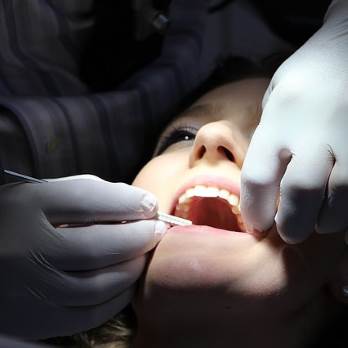government-assisted senior implant programs
Dental health plays a critical role in overall wellness for seniors, yet many struggle with tooth loss and subsequent complications. Dental implants offer a permanent solution that can significantly improve quality of life, but their high cost often places them out of reach for many older Americans. Fortunately, various government-assisted programs help make dental implants more accessible to seniors who might otherwise be unable to afford this life-changing treatment.

Understanding Government Assistance Programs for Seniors
The landscape of government assistance for dental implants involves multiple programs at federal, state, and local levels. Medicare, the primary health insurance program for Americans 65 and older, generally does not cover dental implants as they’re considered cosmetic rather than medically necessary. However, in specific situations where dental implants are deemed medically essential—such as following jaw cancer treatment—Medicare Part A might provide coverage during inpatient hospital stays.
Medicaid, on the other hand, offers more potential for dental implant coverage, though benefits vary significantly by state. Some states provide comprehensive dental benefits that may include implants, while others offer limited coverage or none at all. Additionally, the Veterans Affairs (VA) Dental Care program provides dental implant services to eligible veterans who meet specific criteria, such as having a service-connected dental disability or being a former prisoner of war.
Eligibility Criteria for Senior Implant Support
Qualifying for government assistance for dental implants typically depends on several factors. For Medicaid dental coverage, eligibility generally requires meeting income thresholds specific to each state. Seniors must have income and assets below certain limits, which vary based on the state’s guidelines and whether the applicant is single or married.
For VA dental benefits, veterans must fall into one of several eligibility categories. These may include having a service-connected dental disability, being a former prisoner of war, having a 100% service-connected disability rating, or participating in a VA vocational rehabilitation program.
Some states also offer specific dental assistance programs for seniors that have their own eligibility requirements. These might include age restrictions (typically 65 or older), residency requirements, income limitations, and demonstrated dental need. Documentation of financial need and medical necessity often strengthens applications for these programs.
Navigating the Application Process for Senior Implants
The application process for government assistance with dental implants can be complex and time-consuming. For Medicaid, seniors should begin by contacting their state’s Medicaid office or visiting the official website to understand the specific dental benefits available in their state. The application typically requires proof of identity, residency, income, and assets.
Veterans seeking dental implant coverage should apply through their local VA medical center’s dental clinic. The process involves verifying eligibility status and often requires a dental examination to establish medical necessity for implants.
For state-specific senior dental programs, applications are usually available through the state’s department of aging or health services. Many of these programs also work with designated dental providers, so seniors may need to receive treatment from specific clinics or dentists to utilize their benefits.
Common Challenges in Securing Government Assistance
Navigating government assistance for dental implants presents several obstacles for seniors. One significant challenge is the limited coverage scope—many programs consider dental implants elective procedures rather than medically necessary treatments. This classification often results in denial of coverage, leaving seniors to explore alternative options.
Administrative hurdles also create difficulties, as application processes can be complex and time-consuming. Many seniors struggle with understanding eligibility requirements, gathering necessary documentation, and following up on applications. Limited availability of services compounds these issues, as waiting lists for government-assisted dental programs can stretch for months or even years in some areas.
Additionally, finding providers who accept government assistance can be challenging. Not all dental professionals participate in Medicaid or other government programs due to lower reimbursement rates and administrative requirements. This limitation restricts seniors’ options and may necessitate traveling longer distances to receive care.
Expert Insights on Maximizing Benefits for Senior Implants
Dental and elder care experts recommend several strategies to increase chances of securing government assistance for implants. First, obtaining detailed documentation from healthcare providers about the medical necessity of dental implants can significantly strengthen applications. This documentation should emphasize how implants would address existing health issues or prevent future complications.
Experts also suggest exploring multiple assistance programs simultaneously. While one program might not cover the full cost of implants, combining benefits from different sources—such as state-specific senior dental programs, Medicaid, and nonprofit assistance—can make treatment more affordable.
Working with patient advocates or social workers experienced in healthcare navigation can provide valuable guidance. These professionals understand the nuances of different assistance programs and can help seniors present the strongest possible case for coverage.
Available Programs and Estimated Costs
Several government and nonprofit programs offer assistance specifically for senior dental implants, though coverage amounts and availability vary widely.
| Program | Coverage Type | Potential Assistance | Eligibility Notes |
|---|---|---|---|
| Medicaid (varies by state) | Partial to full coverage | $1,000-$3,500 per implant | Income-based; comprehensive in some states |
| VA Dental Care | Potential full coverage | Full cost for qualifying veterans | Service-connected eligibility required |
| State Dental Assistance | Sliding scale or fixed amount | $500-$2,500 per implant | Age and income requirements vary by state |
| PACE Programs | Care coordination with dental benefits | Varies by location | For nursing home-eligible seniors who live at home |
| Dental Lifeline Network | Pro bono dental care | Full treatment for qualifying seniors | Limited availability; waiting lists common |
Prices, rates, or cost estimates mentioned in this article are based on the latest available information but may change over time. Independent research is advised before making financial decisions.
Conclusion
Government-assisted senior implant programs offer valuable pathways to affordable dental implant treatment, though navigating these options requires persistence and thorough research. While Medicare’s limited coverage creates significant gaps, Medicaid, VA benefits, and state-specific programs provide potential solutions for eligible seniors. By understanding eligibility requirements, thoroughly documenting medical necessity, and exploring multiple assistance options, seniors can increase their chances of securing financial help for these life-changing dental procedures.
This article is for informational purposes only and should not be considered medical advice. Please consult a qualified healthcare professional for personalized guidance and treatment.




